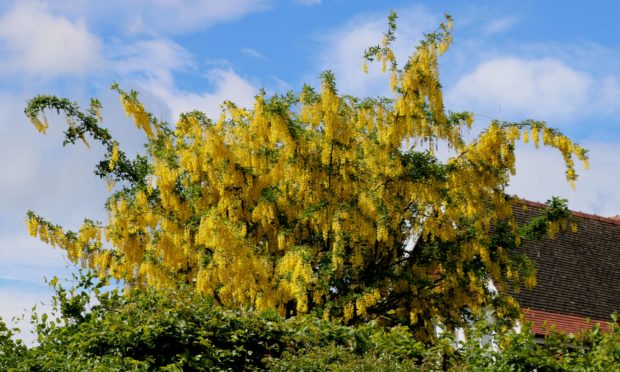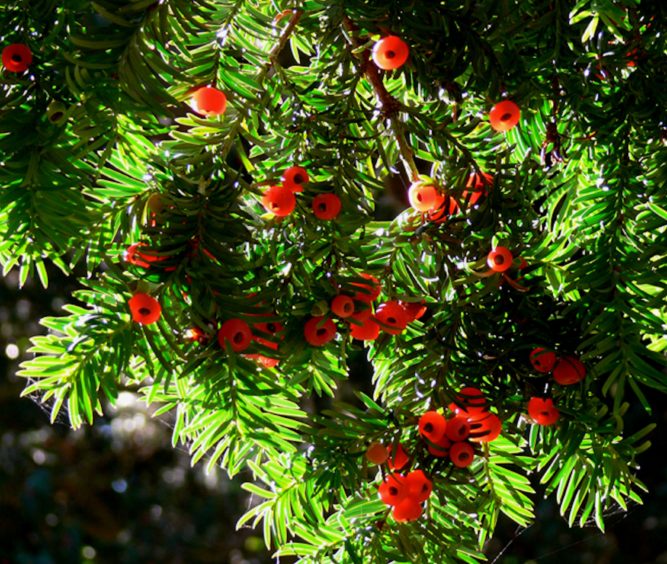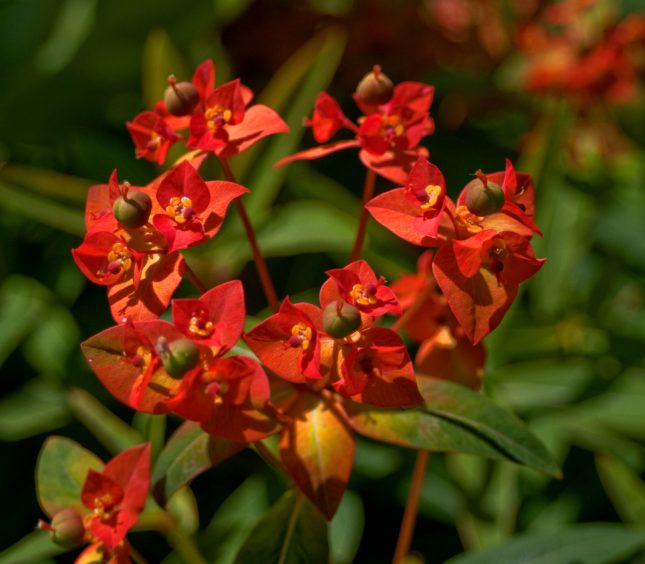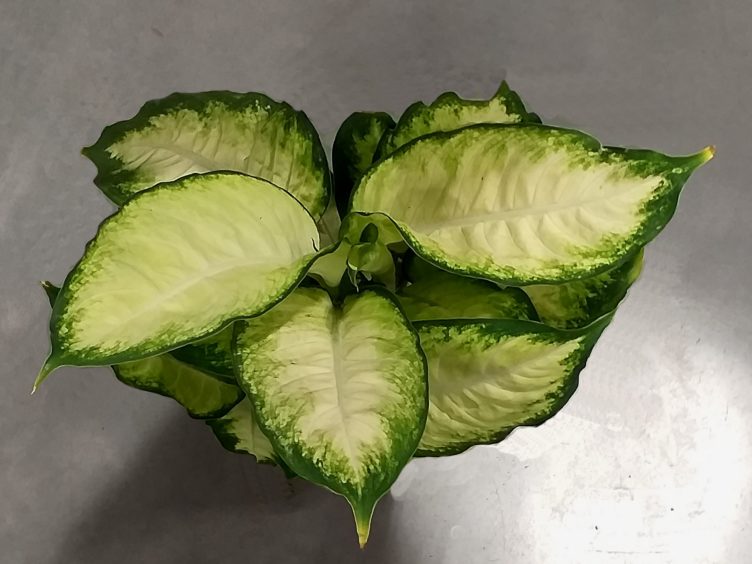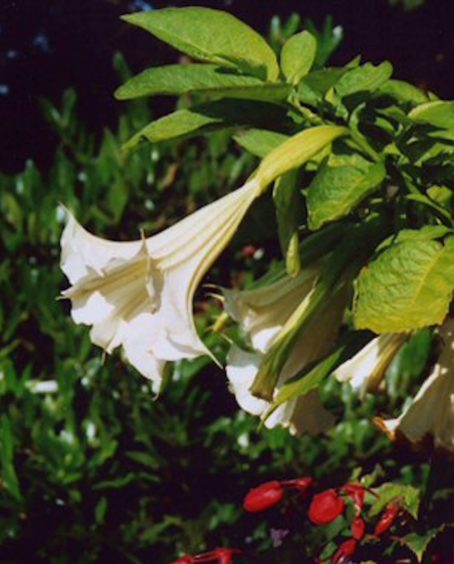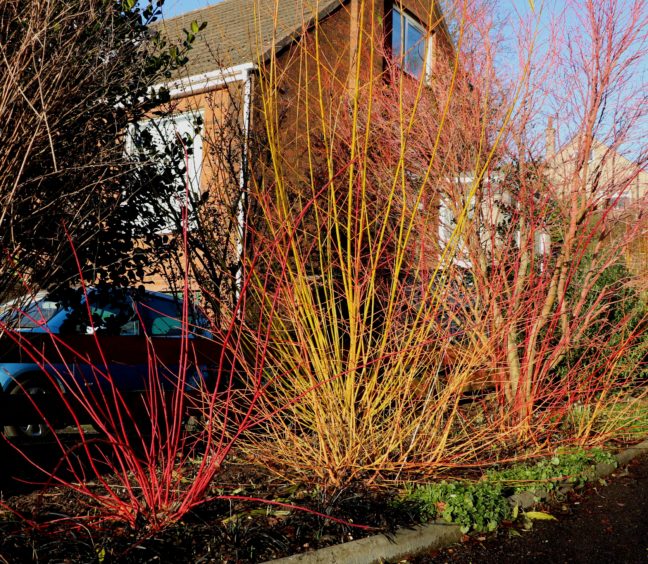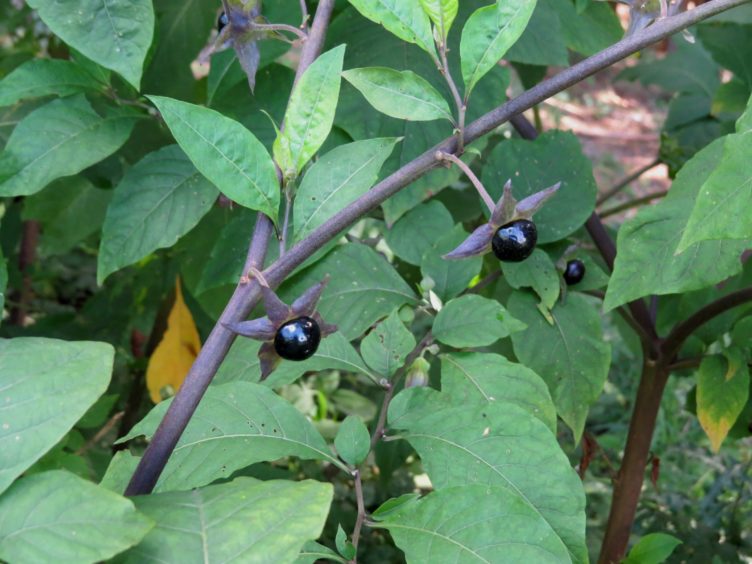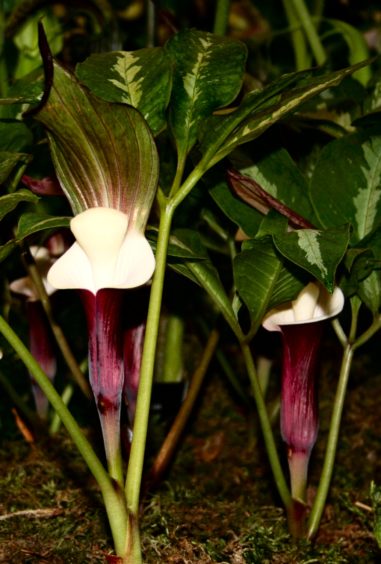I chose a career in horticulture as I just loved growing plants and enjoying the beauty of flowers, and it has only been lately that I discovered just how many garden plants contain toxins, poisons and skin irritants.
In the early training years it was the Laburnum with beautiful golden yellow flowers followed on with poisonous seeds.
Later on when hogweed became notorious we knew not to touch the sap or hairy stems.
As kids we all got stung by nettles and were amazed that folk gathered the leaves to make tea.
Growing up in St. Marys in Dundee we grew rhubarb (the poor man’s fruit) and were well aware that we only ate the red stems and not the leaves.
They are rich in oxalic acid, but no-one was ever tempted to stick the leaves in their mouth so there was no problem.
Similarly the host of plant poisons is seldom a problem as there is little reason to eat something that would taste horrible.
When looking into garden plants with poisons I was just amazed at the long list, (the Royal Horticultural Society has a list of over two hundred plants) and so many are our every day plants grown in gardens and house plants.
Rhododendrons, daffodils, aconites outdoors and indoors we grow poinsettias at Christmas and forced hyacinths as well as dumb cane which if ingested can cause immobility of the mouth and tongue, difficulty in breathing and asphyxiation.
Aconites have powerful toxin, aconitine, which can kill people who come into contact with it.
All parts of the plant are toxic but the sap in particular is a skin irritant, causing burning of the lips and mouth, vomiting, diarrhoea and spasms.
Over time plants have developed numerous ways to aid survival from thorns on stems to poisons in leaves, stems, bark, seeds, flowers and roots to discourage other animals from eating them.
Outdoor public landscapes contain laurels, rhododendrons, snowberry and yew trees.
Every part of the yew tree is poisonous except the fleshy aril around the seed.
The stems, leaves and seeds contain the toxic alkaloid taxine.
Monks would use them to mark and protect the routes of their pilgrimages.
They would collect the yew seeds as a food source and eat the aril, but spit out the seed as they travelled on their pilgrimages.
Euphorbia griffithii Fireglow has a milky sap, which is extremely irritating to the skin and eyes.
Arisaema sikokianum, an attractive bog plant produces fleshy seed coats contain oxalic acid in the sap.
Opium poppies are quite commonly found in gardens brought in by birds, but the sap in the seed head contains opium.
Another garden plant used in tubs to flower in summer is the Angels Trumpets, Datura stramonium.
It has attractive large scented tubular white flowers, but every part of this plant is toxic.
South American native Indians use it as a drug because of its hypnotic and hallucinogenic affects, but in the wrong dose it can be fatal.
However to keep matter in perspective, very few folk suffer from plant poisons as we usually only eat those foods that we know and like, but then you find that some of our everyday foods contain poisons.
Take apples, tomatoes and potatoes and look a bit deeper into their properties.
We eat apples right down to the core which gets discarded.
Just as well as apple seeds contain cyanogenic glycosides, a cyanide compound that could be fatal in high enough doses, but that means eating an awful lot of apples in one sitting.
The potato and tomato belong to the solanacae family that contains some very poisonous members including the deadly nightshade.
In the kitchen we all know to discard any potatoes where the skin has turned green on exposure to light.
It contains the toxin glycoalkaloid solanine. This toxin is also present in tomato leaves, stems and unripe fruits as well as tobacco and peppers.
These alkaloids in tobacco can be addictive and in belladonna fatal as it contains tropane.
Wee jobs to do this week
The winter garden has been the centre of attraction since early December once all the leaves dropped to the ground.
Cornus, Kerria, Salix Britzensis and the Japanese maple Acer Sangokaku have all got very brightly coloured stems, adding winter colour up to the end of March.
However remove all the fallen leaves and any weeds that may spoil the show. This also lets the early snowdrops grow up into the light to add some colour contrast.
